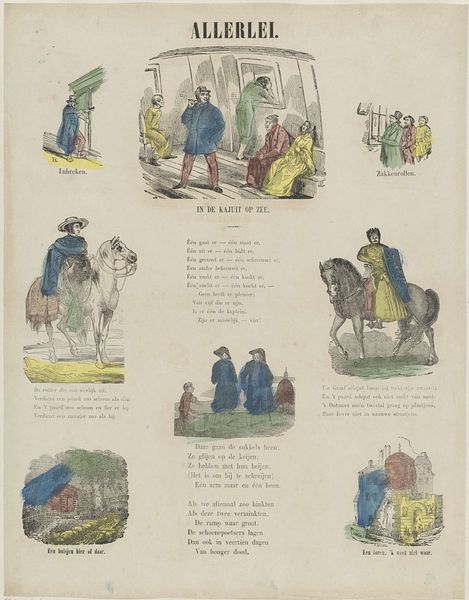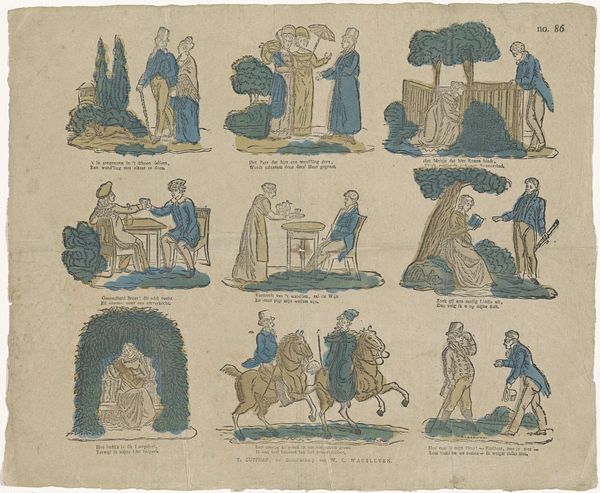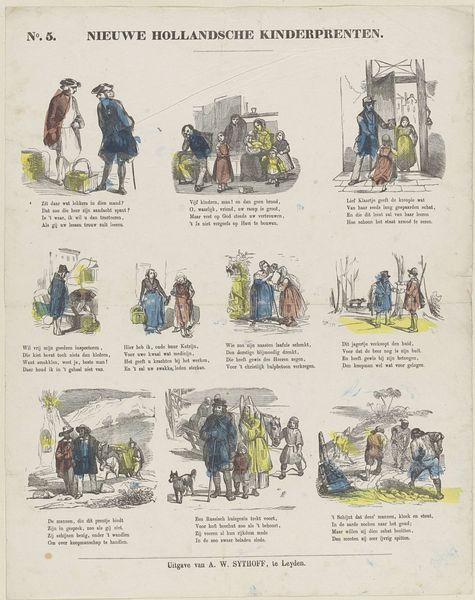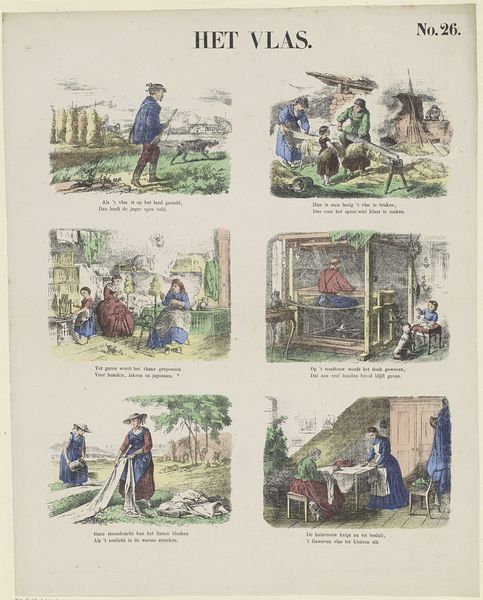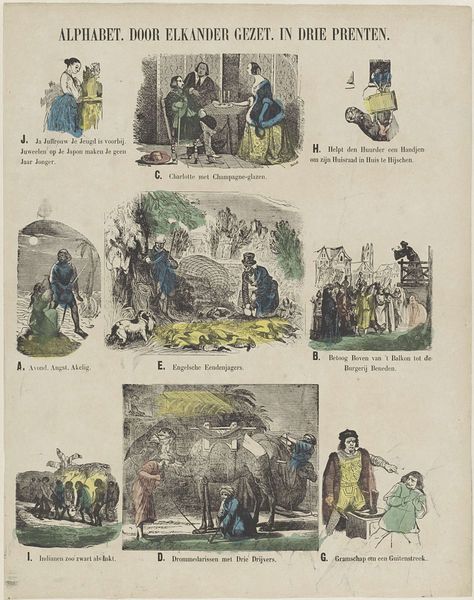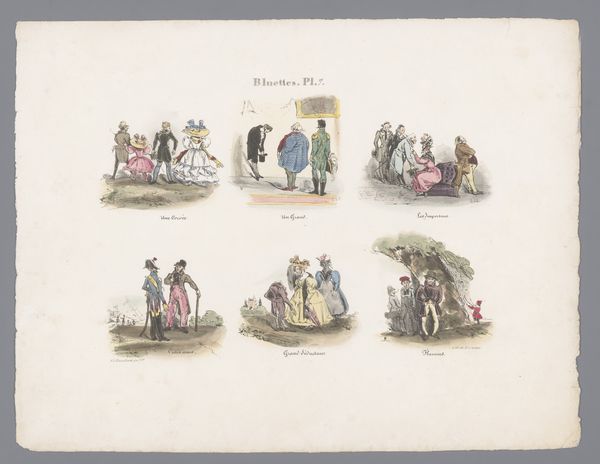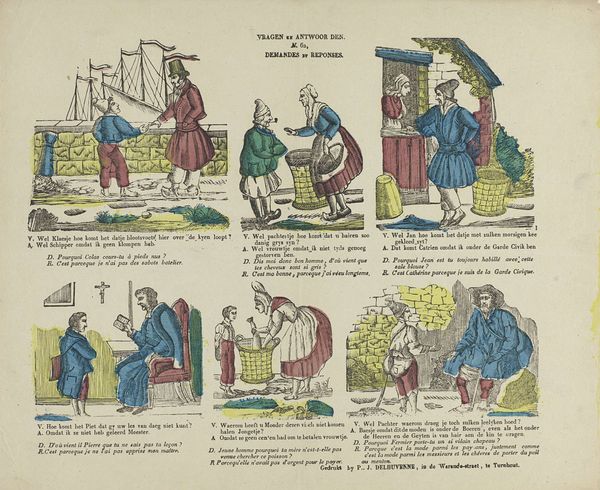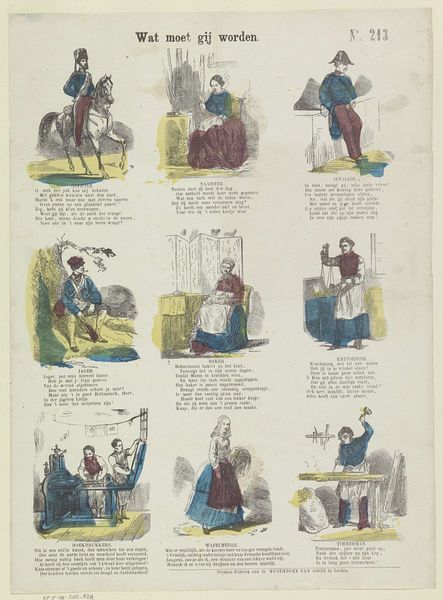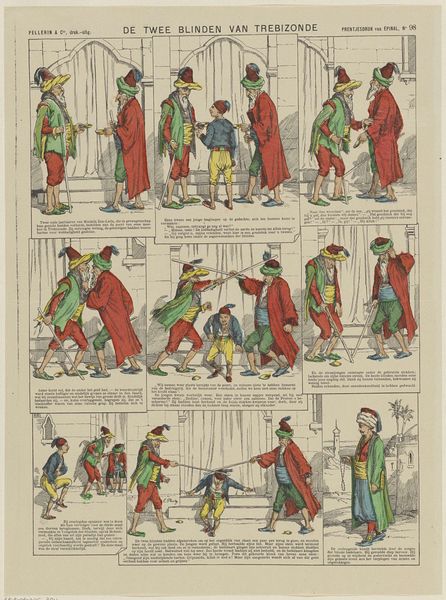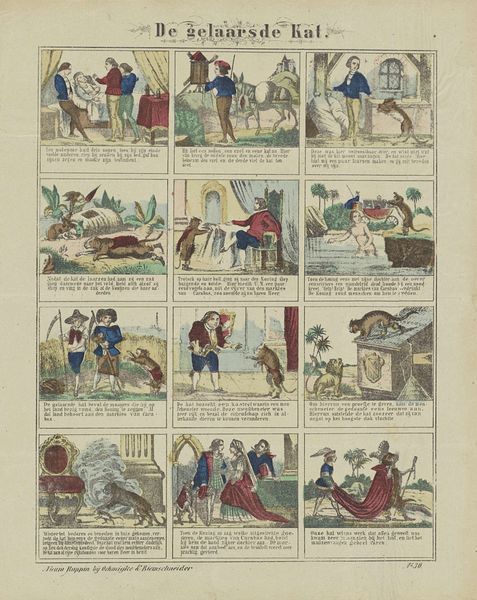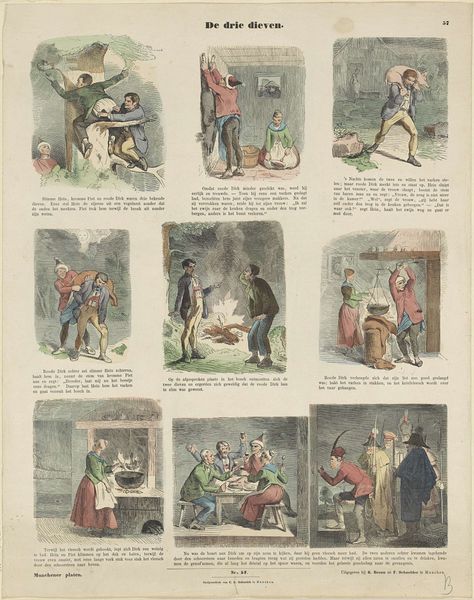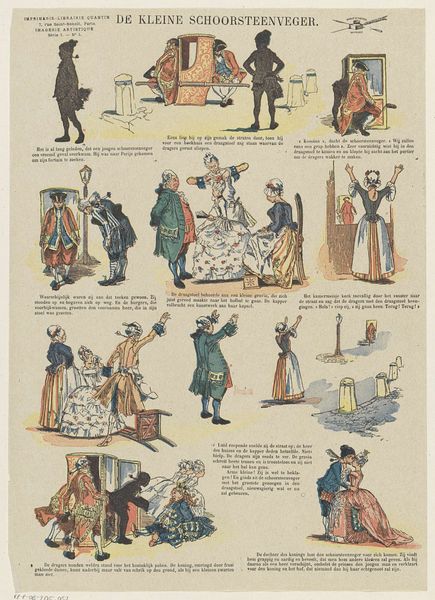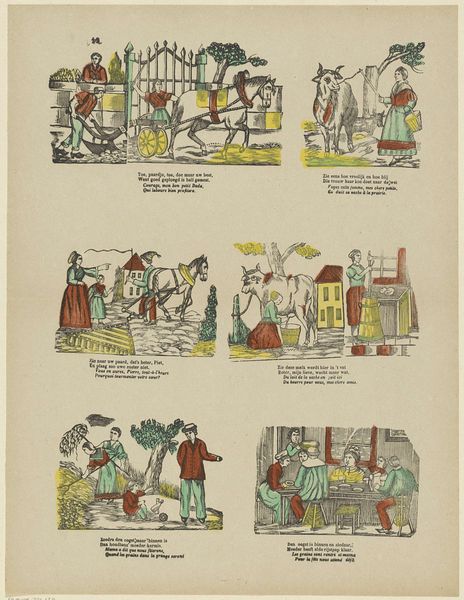
#
imaginative character sketch
#
quirky sketch
# print
#
sketch book
#
personal sketchbook
#
idea generation sketch
#
sketchwork
#
sketchbook drawing
#
watercolour illustration
#
history-painting
#
storyboard and sketchbook work
#
sketchbook art
Dimensions: height 415 mm, width 340 mm
Copyright: Rijks Museum: Open Domain
Albertus Willem Sijthoff made this print, entitled "Staalkaart van onze natuurgenoten", which translates to "Chart of our compatriots", using lithography. This printing technique, which was developed in the late 18th century, relies on the chemical repulsion of oil and water. The design is drawn on a flat stone with a greasy crayon, treated with chemicals, and then the image is printed using oil-based ink. This method allowed for relatively quick and inexpensive reproduction, making printed images like this one widely accessible. The "chart" presents various figures, seemingly representing different ethnic or cultural groups. Lithography’s efficiency lent itself to the mass production of such imagery, which was often used in an attempt to define and categorize people during the height of colonialism. Consider the labor involved: from quarrying the limestone, to the artist's hand, to the press workers who would have made many copies. The materials and processes here are not neutral; they reflect broader social and political structures. And ultimately, they speak to the way in which knowledge itself is constructed, reproduced, and disseminated.
Comments
No comments
Be the first to comment and join the conversation on the ultimate creative platform.
